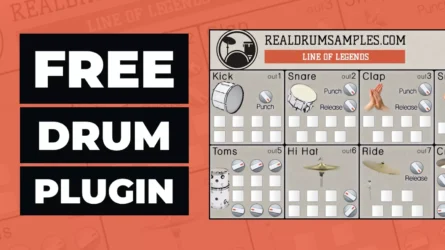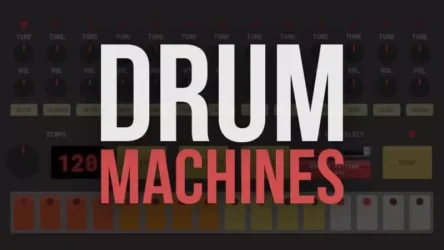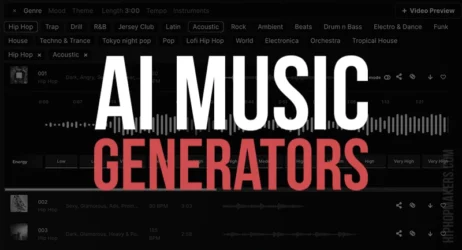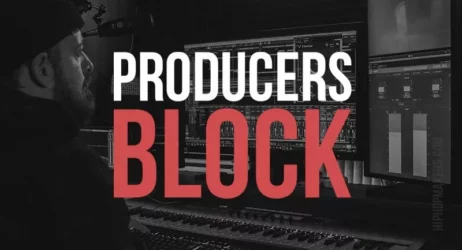Here you will learn how to play piano in easy-to-follow steps. I have videos for each section to help better understand the basics of the piano.
Learning how to play the piano is an excellent way for beginners and experts alike to express themselves. It’s also a perfect form of exercise, as it requires both mental and physical agility.
The following steps will help you learn how to play the piano in no time! Follow these fifteen easy tips to learn how to play the piano step by step.
If you do not have access to an acoustic piano in front of you, you can play with a free virtual piano online to learn the basics.
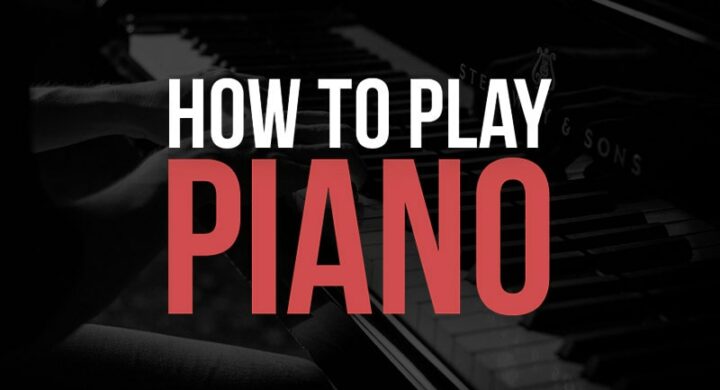
Learn How To Play Piano
1. Label The Piano Key With Letters
If you are new to music, labeling the piano keys can be very helpful to understand the keyboard better. You can use white masking tape to label your piano keys or get special stickers to put on your piano keys to help identify the different keys.
You can label your white keys with letters from A to G. These are the notes you play when pressing a piano key: A, B, C, D, E, F, and G.
Labeling your black keys will help you because they can be identified by how many sharps or flats they have.
The black keys on the music keyboard always go in twos and threes too. Press two or three black notes together to play a sharp note, and press two or three white notes together for a flat note.
Sticker Version – The stickers look cleaner and are inexpensive.
No products found.
2. Learn Notes on The Piano Keyboard
Learning the different notes is essential because this is how you read sheet music and play songs on the piano.
There are 7 notes that are repeated on the piano: C, D, E, F, G, A, B
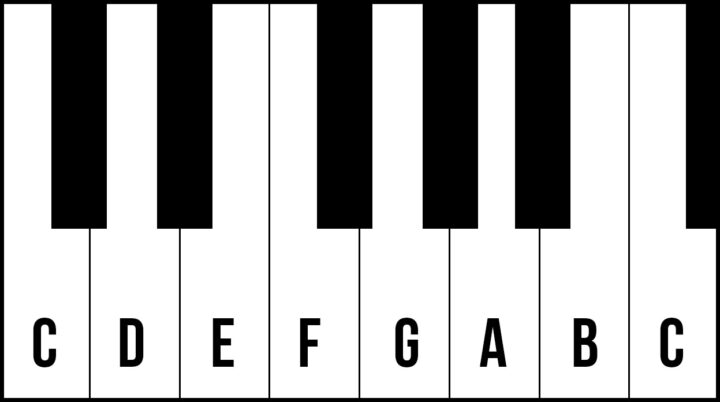
These notes repeat several times through the keys, depending on how many piano keys you have. The C appears in front of the 2 black keys.
3. Learn Correct Finger Placement on The Keys
The middle C note is the most important place on the keyboard. This is how you start counting in music and know how far to move up or down on the keyboard.
Everyone has ten fingers, so it’s best to use them all when playing the keyboard. When playing the piano, you will be using all your fingers, sometimes two at a time.
4. Practice Playing Each Key Individually
Start playing each of the white keys where you can play them very slowly, making sure that your fingers are not touching more than one key. Do this until you feel comfortable with how high or how low to place your fingers on the piano keys.
When you practice playing each key, make sure you use your pinky finger with your index finger to play the white keys.
Now practice playing each of the black keys. Make sure you use your ring finger with your middle finger or your pointer finger with your middle finger to play the black keys. You will always use either two fingers together or three fingers together to play the notes on the piano.
5. Try Common Beginner Piano Exercises
Different types of piano exercises for beginners include scales, chords, arpeggios, and playing notes.
Here is a collection of piano exercises to help you warm up and better understand sound.
Scales will help you learn how to play the piano fast because they teach you to play each key correctly. Scales are how most songs sound, so learning how to play them is essential.
Piano Chords are three notes that sound good together, and they can be used in many songs. They are how most songs start.
Arpeggios are when you play the notes in a chord one at a time to create a faster sound. Notes are how you play individual notes to create songs or how you can start a chord. You will learn how to play each kind of note as you know how to play the piano.
6. Learn How To Play Piano Chords
Piano chords are how you play more than one note at a time on the piano.
There are different types of chords that you can play, including major, minor, and seventh chords.
Each type has its own sound, so listen closely to how they all sound to see which type you want to play.
Once you know how they sound, learn how to play every kind of chord.
A major chord is how you play three notes at once, and you always start with the root note and add a third and fifth above it.
A minor chord is how you play three notes at once.
The only difference between how you play a major chord and how you play a minor chord is how you begin the first note.
A seventh chord is how you play four notes at once, which means that you will always start with the root note and then add a third, a fifth, and an octave above it.
It can be helpful to get a piano chord poster or chord book to learn different chords.
Piano Chord Books
No products found.
Piano Chord Posters
No products found.
If you learn piano chords, you can pretty much start making music. Many songs consist of a variety of chords.
7. Try Using Both Hands
As you get better at playing piano, you can start using both hands. This is how you will be able to play faster and more complicated songs on the piano.
It also helps to learn how to play different rhythms in your songs, like how fast or slow they should go.
Once you learn how to play your notes, chords, and scales in both hands, you will feel more confident in yourself. This is how you will be able to play many more songs on the piano.
8. Learn What Octaves Are
Octaves are how you play the same note eight notes apart on the piano. For example, if you play one C key, moving eight keys over to the right will be another C key because that’s how many keys there are in a piano octave.
Octaves are vital because you can play a lower octave and then an octave above it to create an entirely different sound. As you learn how to play different octaves, you will learn how to play higher and lower notes.
9. Learn How To Read Music
Once you learn how to play the piano, you will read how to play sheet music. There are different ways that songs can be written on paper.
The first way is how you see notes on a staff. A staff has five lines and four spaces on it, with each line representing how high or how low the note should sound and how fast it should go.
The second way songs can be written on paper is to see how the notes move up and down a staff, like how fast they should go, how loud or how soft they should sound, and where the following note occurs.
Free Piano Sheet Music
10. Play Your First Music Sheet
Once you learn how to play the piano, you can play a few notes on a music sheet that will sound good together.
It is how some songs start and how most beginner piano songs start.
Start by learning how to play simple music sheets like Twinkle, Twinkle Little Star, or Mary Had a Little Lamb.
Once you learn how to play those songs, move on to playing the chorus of a song like Happy Birthday.
Free Sheet Music
11. Learn Timing
As you play more and more, learning how to time things correctly will become necessary. This means how fast or how slow the song should go or how many beats should be in a measure of music.
Once you learn how timing works on paper, it can help you learn how to read music faster to play songs immediately after reading them instead of practicing them for an extended period before playing them altogether.
You can use a metronome to learn to time even better. A metronome is how you keep track of how fast or how slow the song goes when you are trying to learn how to play the piano.
You can check 10 Free Online Metronomes to help with timing.
12. Practice, Practice, Practice
The best way to learn how to play the piano is by practicing as much as you can.
Every day, practice how to play different songs and learn how many beats there should be in a measure.
Create a schedule and routine to practice playing the piano. You will not become a professional overnight. It will take time to learn how to play the piano. Everyone starts somewhere.
Once you have learned how to play your first song, practice how to play it better, and do other things on the piano.
Keep learning how different chords work and how different octaves are played. Soon enough, you will be able to play complicated songs on the piano.
Practice all of the tips above, and soon you will be able to play like an expert.
13. Study Pianists
You can watch how pianists play on YouTube. Please pay attention to how they move their fingers up and down the keys.
This will show how they do it to mimic them when you are trying to learn how to play piano yourself.
Learn where their hands are positioned, how fast they move their fingers, and any other tips that may help learn how to play piano in general.
14. Have Fun & Enjoy Yourself!
Just like how runners enjoy running or how bakers enjoy baking, how you learn to play the piano should be fun.
Learning how to play the piano should be enjoyable, to make sure to play better with time.
You will not become a professional overnight, but you will start to enjoy playing the piano in no time at all.
15. Take Online Courses
If you want to speed up the learning process to play, take some video courses online. There are many expert courses online that you can take to learn how to play the keys in a short period.
Skillshare has hundreds of courses online from professionals to help you learn to play the piano fast.
Here are a few popular piano courses online:
- Piano Lessons For Beginners
- 24 Hours of Piano Lessons
- Play The Piano By Ear
- Learn Piano Basics in 50 Minutes
- The Fundamentals of Piano Playing
Learning is easy when you have a guide to teach you how to play the piano.
Bonus: Learn to Play By Ear
Many talented musicians can play music without reading music and playing by ear. This is a skill that does not come easy but can be achieved with practice.
Here are a couple of videos with tips on learning how to play by ear.
Learning how to play the piano is not as hard as it may seem. If you understand the basics and practice often, you will continue to grow, and it will become easier.
In embarking on your piano journey, you’ve decided to take a step into a realm with a rich history.
You have chosen a musical instrument that has captivated many pianists and shaped popular music as we know it.
To get started, remember the essential importance of the correct posture. Sit comfortably with your shoulders relaxed, as good posture forms the basis for every professional pianist’s technique.
It’s important to start learning the middle C, as it forms a reference point for all the notes on the piano.
Begin your musical journey by learning the fundamental chords and the major scale, starting with the major triad.
This will allow you to play simple melodies and even an easy song in no time! The black key and white key work together to create all the music you’ve ever heard, each one important in its own right.
Playing other musical instruments can supplement your piano knowledge, broadening your musical key understanding.
Learning how to read music for other instruments helps reinforce the music theory you learn from the piano. Many professional musicians have proficiency in more than one instrument, and this versatility can only enhance your musicality.
In addition, a music school can offer adult students a structured learning method, providing consistent practice sessions and exposure to a variety of musical styles.
Ear training exercises, often included in a school’s curriculum, can enhance your ability to play by ear and transcribe your favorite songs. This adds another layer to your musical expertise.
Just as learning to use two hands together can be challenging when you’ve just started playing, staying motivated might seem daunting at times. But with consistent practice, the right hand and left hand will soon harmonize beautifully. The best piano learning experience comes from enjoying the process.
Mastering the piano is like exploring a world of sound that’s both natural and human. It’s about understanding chord progressions and time signatures, and it’s about building your own connection with this timeless instrument.
Don’t get discouraged if it’s hard at first; remember, even the most accomplished pianists were once beginners.
Bonus Tips:
- Always remember to warm up before you start playing. It helps to loosen your fingers and prepare your mind.
- Try to listen to a lot of piano songs, even classical music. It will give you a better sense of the sound and style of piano music.
- Play the music that you love. It’s easier to stay motivated when you’re playing songs you enjoy.
- Practice regularly. Consistency is key to progress.
- Stay patient and take your time. Learning piano is a journey, not a race.
If you love music and aspire to improve your skills, nothing can prevent you from achieving your dream of becoming a pianist.
So, start today, and let your piano knowledge grow with every note you play.
Make it a habit to practice daily, follow the tips above, and you will become a pro before you know it.
Patience is important. Things may seem overwhelming at first, but it gets easier with time. Good luck!

